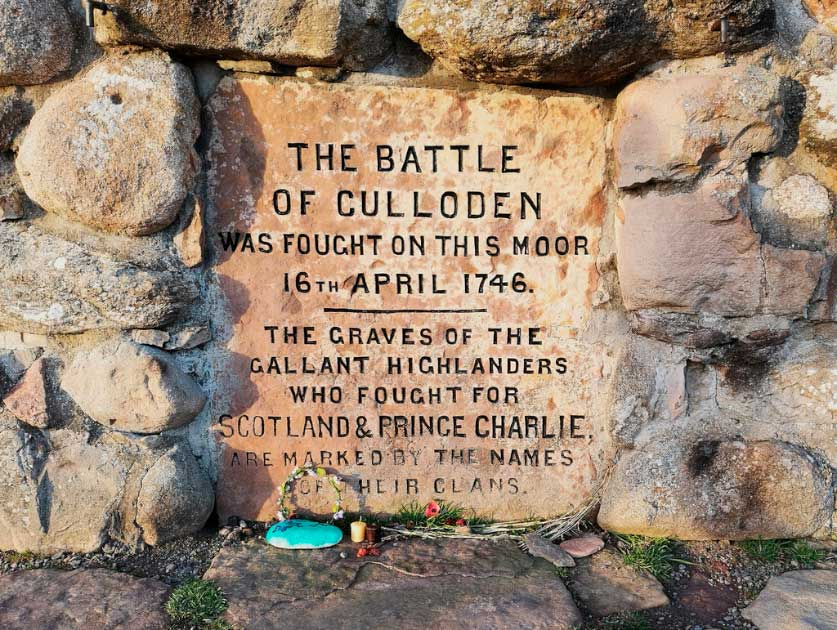In 1745, buoyed by French and Scottish support and believing his moment has come, Bonnie Prince Charlie, the Catholic pretender to the throne of Great Britain, landed in Scotland to claim his birthright in the name of his father. Supported by the great Catholic powers of Europe, he intended to march southwards and defeat the protestants, winning Britain for himself.
With him came an army, and with the army came a treasure. In order to finance such an expedition the French and Spanish monarchs had been invited to dig deep into their pockets and provide a huge amount of money to support the pretender.
If the gold had been used for its true purpose, it could have financed a takeover of Britain and changed the face of geopolitical history as we know it today. In all, the Jacobite Gold would amount to some $10 million in today’s money.
But it was not to be. Bonnie Prince Charlie’s forces were defeated at the Battle of Culloden and the prince himself was forced to flee to France. However, in the panic to escape from the victorious British the treasure itself disappeared.
What happened to all the money?
The Scottish Rebellion And Jacobite Gold
The need for such a huge amount of gold as war help arose when Scotland was merged with England under the Act of Union Treaty. Scotland, fiercely independent then as now, had seen her coffers disastrously drained due to a failed attempt to colonize central America, and in 1707, facing bankruptcy, the Scottish Parliament agreed to join with England and voted themselves into oblivion.
This led to huge discontentment among the Scottish population. England had ever been their enemy, and the harsh taxes imposed by their English overlords further flamed Scottish rebellion. The Scottish support for Bonnie Prince Charlie, himself of Scottish ancestry, was a natural progression as they sought to overthrow the hated English, now British, monarchy.
But they needed money, and the rebellion was led by Jacobites with the backing of Spain, France, and other Catholic states. Two previous, unsuccessful attempts had been made in 1708 and 1715. However, in 1745, things would be different.

This ambitious effort at changing the leadership of the United Kingdom was at first successful, with Prince Charlie’s forces seizing Edinburgh with ease and proceeding south to invade England. However, for the revolt to be a success, the prince needed French support. He expected this support in military troops, but received only financial help.
A King’s Ransom
France sent some financial help on the ship Le Prince Charles which carried about 400,000 Spanish livres worth of gold to help the Jacobites’ cause. The gold was quickly captured by British forces, but this was only a month’s expenses, and further installments were promised.
Some 1,200,000 livres more arrived the next April, but by then the rebellion was in trouble. With the Scottish defeat at the Battle of Culloden, the money was useless and indeed much of it, including the French contribution, was hurriedly repatriated. Only seven caskets of Spanish gold were landed, and six of them were brought to Loch Arkaig.
The gold was to be used to help Jacobites in hiding from the British army, financing their escape to sympathetic Catholic countries. However, even at this early stage the gold had started to go missing. The seventh casket had already been stolen by a man named McDonald of Barrisdale, and the remaining six were hidden near the loch.
The gold was apparently never distributed. Although the Jacobites had intended to pass the wealth on to the clan chiefs, allowing them to buy their way out of the troubles they had brought down on themselves by supporting the rebellion, this never occurred. After clashes with the British army and a string of betrayals and defections, the secret of the gold was entrusted to Ewen MacPherson of Cluny, head of Clan Macpherson.
Nobody knows what MacPherson did with the gold. Both Bonnie Prince Charlie and the Spanish made great efforts to retrieve the riches, but the majority of the gold was never seen again.
The Search for Jacobite Gold
Over the years, many treasure hunters and explorers have tried to find the exact location of the gold caskets. However, the Highlands still seem to protect the secret of the gold against all searches. The last person to know where the caskets were hidden was MacPherson, and the gold may still lie where he knew it to be hidden.
- Where are the Lost Fabergé Imperial Eggs?
- The Great Bell of Dhammazedi: Where is the Largest Bell Ever Made?
MacPherson himself was in hiding after the futile Rebellion of 1745, living in a cave near Loch Arkaig named the Cage for nearly nine years in harsh conditions. Although locals of the Highlands knew his location, no one betrayed his location to the British who also searched tirelessly for him and the treasure.

In the present times, the existence of the Jacobite gold has become more of a folk tale, passed down from generation to generation. Even the Jacobite loyalists had often gone in search of the treasure because they believed some part of the treasure was embezzled and hidden by MacPherson. However, all their efforts were in vain as the real treasure has never been found.
Many people and explorers believe that the real gold, worth many millions, was never hidden in a single place. MacPherson was a clever person, and he must have chosen scattered locations to keep the gold in parts. Therefore, the true location of the gold was never known to anyone.
Because the amount of gold was huge, it is also likely that MacPherson could never have spent it all, and there are still some gold caskets lying beneath the grounds of Highlands of Scotland. Even today, people believe there is some treasure of Jacobite gold to be found if only the location is revealed.
Many historians believe that the gold is where deep into the southern slopes of Ben Alder, a hill near the Cave where MacPherson once hid. Some explorers believe the gold is buried near the shores of Loch Ericht. According to other accounts, the caskets were buried near the shore of Loch Arkaig, where the caskets had first landed. Of course, all of these theories could be true if the treasure was buried in a scattered manner.
Maybe the treasure was all spent in the centuries following the failed Jacobite rebellion. Or maybe, somewhere out there in the wilds of Scotland, caskets of Spanish gold still wait to be found.
Top Image: Almost none of the Loch Arkaig gold has ever been found. Source: fergregory / Adobe Stock ; William Mosman / Public Domain.
By Bipin Dimri